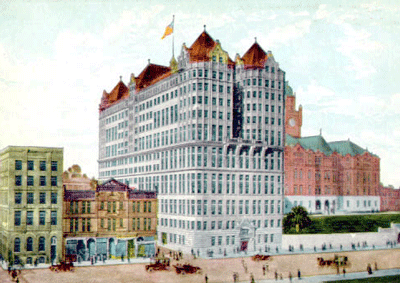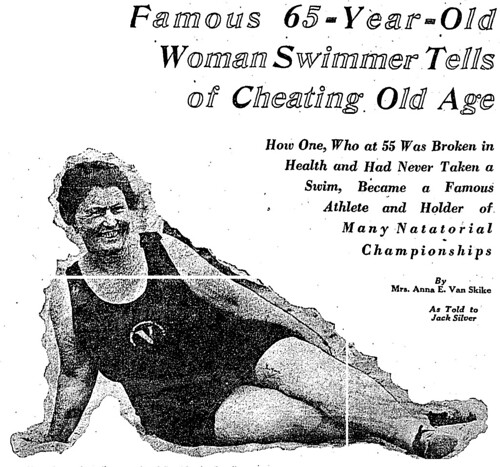Today, 17-year-old Paul Daedler was committed to the Preston School of Industry at Ione on vagrancy charges, and sentenced to remain there until he is 21. It sounds harsh, until you dig a little deeper.
You see, at the tender age of 14, Paul Daedler was accused of one of the grisliest crimes in Pasadena history. Paul came from a good family, but it was reported that he attended the Monroe School for Subnormal Children along with his friend, William "Billie" Forrester. William was adopted, and had been in trouble with the law since he was 12, when he stole $500 from a neighbor and ran off to Arizona.
After school on December 5, 1923, Paul and William were playing with 5-year-old Arthur Martinez, the youngest child of a Pasadena gardener, in an abandoned factory at 950 S. Raymond Ave. They had a loaded .22 with them. Exactly what happened in the factory is uncertain, but little Arthur was shot twice in the head and once in the back. The shots didn’t kill him, though. Scared that Arthur would squeal on them, Paul and William beat him over the head with a brick, tied him to a pole with wire, and left him overnight. When they came back to the factory the next day, (to free him, they said), the boy was dead.
Paul and William went to the police and reported that they "found" Arthur in the factory. However, the police were suspicious of the boys, and after questioning, both confessed. At the inquest, the two expressed little emotion or remorse for what they had done, though the truant officer sitting near them in the courtroom had them shaking in their boots.
On December 20 hearing, Paul was joined by two lawyers, his parents, sisters, and a bevy of witnesses, while William had only his mother by his side. Although Paul had signed two confessions of guilt, his lawyers called witnesses to establish Paul’s alibi for the time of the killing. Paul also stated that he’d attended school on December 5, then rode his bicycle to a confirmation class at his church. The pastor of Paul’s church testified that Paul had been in class, although his schoolteacher, Miss Anna Crane, said that she had not seen Paul after 2pm on the day of the murder.
William was sent to the Preston State School on his 15th birthday to await trial, while Paul was sent to the Whittier State School. Their names and school ID numbers are included in the California Youth Authority Name Index for 1924 . However, a month after being sentenced to Ione, William produced a confession that absolved Paul of all blame in the killing. In his confession, William said, "I pulled the gun and shot him. Then I though I would put the blame on someone else, so I shot him two more times. I happened to think that whenever Paul Daedler got mad, he always threw bricks, so I decided to throw bricks at Arthur so it would appear that Paul hit him."
Later, it was revealed that a person interested in the case of Paul Daedler had visited him at the Preston School earlier and persuaded him to change his confession. The possibility that Paul’s family pressured the poor and unconnected William to take the rap for his friend is not unthinkable. As the boys sat in juvenile facilities, the Daedler family and their lawyers sought a writ of habeas corpus on behalf of Paul, saying that he had been confined to Whittier without a trial before a jury.
The judge upheld Paul’s detention.
Finally, after serving 17 months at Whittier, Paul was released into the custody of a judge, who ruled that the boy must leave the state, never to return. Paul’s father, Louis Daedler took him east so he could begin a new life. However, less than two years later, Paul was in County Jail on a vagrancy charge, having hitchhiked his way back to California. And today, he was returned to the juvenile facility. If the case did come to trial at some point, it was not reported in the Times.
Paul Daedler died in Los Angeles on December 21, 1981. William Forrester was paroled from the Preston School on November 19, 1925, and disappeared without a trace.
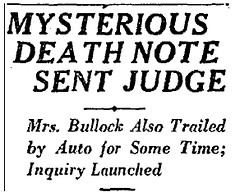 When you’re the first female jurist to serve in the state of California, celebrity finds you, whether you want it or not. Today, police began investigating a series of death threats sent to Municipal Judge Georgia Bullock. The letters had been arriving steadily for six weeks, but Bullock hadn’t taken them seriously until last week, when she realized she was being followed by a lone figure in a large car.
When you’re the first female jurist to serve in the state of California, celebrity finds you, whether you want it or not. Today, police began investigating a series of death threats sent to Municipal Judge Georgia Bullock. The letters had been arriving steadily for six weeks, but Bullock hadn’t taken them seriously until last week, when she realized she was being followed by a lone figure in a large car. Happily, the villains never succeeded in carrying out their threats, and Bullock went on to serve as a judge in Los Angeles for 32 years until her retirement in 1955. She specialized in hearing cases involving marriage, divorce, and homeless children, but her happiest years came at the end of her career, which she spent in the Adoption Department of the Juvenile Court. Upon her retirement, she said, "I’m going to miss it. I’ll miss seeing the little ones that have been such darlings in my courtroom these last twelve years, and I’ll miss watching that wonderful happiness that childless couples show when they are adopting children."
Happily, the villains never succeeded in carrying out their threats, and Bullock went on to serve as a judge in Los Angeles for 32 years until her retirement in 1955. She specialized in hearing cases involving marriage, divorce, and homeless children, but her happiest years came at the end of her career, which she spent in the Adoption Department of the Juvenile Court. Upon her retirement, she said, "I’m going to miss it. I’ll miss seeing the little ones that have been such darlings in my courtroom these last twelve years, and I’ll miss watching that wonderful happiness that childless couples show when they are adopting children."

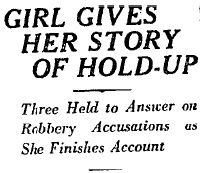
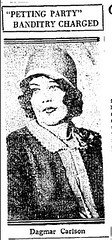
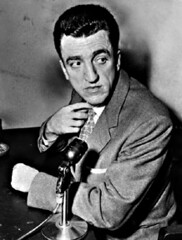



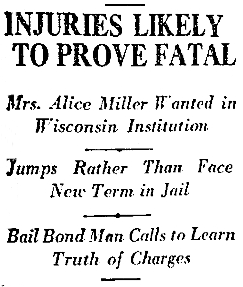 Alice Miller, 24, was hanging out with her buddies Helen Myers, Norman Myers and Robert Wilkenson—the four of them all out on bail on various charges of grand larceny, pickpocketing, and vagrancy—in her little room at the Hillman Apartments,
Alice Miller, 24, was hanging out with her buddies Helen Myers, Norman Myers and Robert Wilkenson—the four of them all out on bail on various charges of grand larceny, pickpocketing, and vagrancy—in her little room at the Hillman Apartments,  But the moments come and go and the collected find the room empty. She’s chosen death over jail: through the open window, they see her broken body lying four stories below.
But the moments come and go and the collected find the room empty. She’s chosen death over jail: through the open window, they see her broken body lying four stories below.


